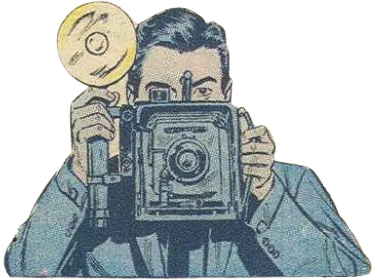Killer Kodaks and Soul-Snatching Shutterbugs (Part 3)
A short conclusion - we should have included this in Part 2.
Catch up: Part 1, Part 2 about the supernatural side of photography and why being “camera shy” might be a good thing.
From Pinholes to Pixels
“Images contaminate us like viruses,”1 and their presence in our lives has never been greater. Camera technology is ubiquitous. We are constantly bombarded by an army of face pullers. Social media (made possible by technology) amplifies the impact.
Pictures one posts online can be viewed by countless people. If Walter Benjamin’s musings are correct, does digital duplication also result in the loss of the subject’s aura?
Does every re-posted pic deteriorate the spirit of the object being represented, making it less authentic and more avatar? The proliferation of ‘selfies’ and the fascination with live-streaming means that society could be committing a form of spectral suicide by shedding auric layers at an unprecedented rate.
But maybe the intrusion of technology isn’t as scary as we make it out to be. Social critic Thomas Mann argued that souls aren’t extinguished by their interactions with technology—they’re transferred: “But could it not be that technology, while the soul succumbs to it—that technology gains a soul?”2 Without human intervention, most machines would remain inanimate objects in the truest sense of the word.
With this in mind, technology can also be a ward against the finality of nonexistence. Capturing a subject’s aura in an image—even against its will—protects a piece of the original. This act helps to preserve the individual from what film critic André Bazin called “a second spiritual death.”3
Pics or It Didn’t Happen
After grappling with her own Hollywood camera-crisis in the late- 1960s, Candice Bergen repositioned herself on the other side of the lens and became a photojournalist.
In 1976 she was on assignment in Munich to cover Muhammad Ali’s heavyweight match against the Englishman, Richard Dunn. After the fight, Bergen asked Ali to autograph one of the pictures she took of him in the ring. The reminder he wrote next to his signature serves as an all-too-fitting epitaph for our tale:
“To Candice: Death is so near, and time for friendly actions is so limited.”4
Cameras may not be the evil machines portrayed in pop culture or myth, but they serve as a powerful reminder that existence is finite. Photographs stand as silent witnesses to the passage of time, providing proof that things never stay the same. Life progresses relentlessly—always moving beyond the confines of our meticulously framed portraits.
Instead of inspiring existential fear, this notion should deepen our resolve to make the most of every moment before we run out of film.


Virilio, Paul. “The Work of Art in the Electronic Age,” in Block, No. 14, Autumn, 1988, pp. 4-7.
Mann, Thomas. As quoted in Puppe, Heinz W. “WALTER BENJAMIN ON PHOTOGRAPHY.” Colloquia Germanica, vol. 12, no. 3, 1979, p. 288.
Bazin, André, and Hugh Gray. “The Ontology of the Photographic Image.” Film Quarterly, vol. 13, no. 4, 1960, p. 6.
Kashner, Sam. “Candice Bergen, Star Reporter.” Air Mail, no. 7, Aug. 31, 2019.












"Instead of inspiring existential fear, this notion should deepen our resolve to make the most of every moment before we run out of film."
This statement could probably serve as a heavily distilled summation of my entire life philosophy. Time is fleeting. Nothing stays the same. Every single moment counts. So, start counting.
Homie, I am going thru observer withdrawals!! When is 17 gunna be shipping?